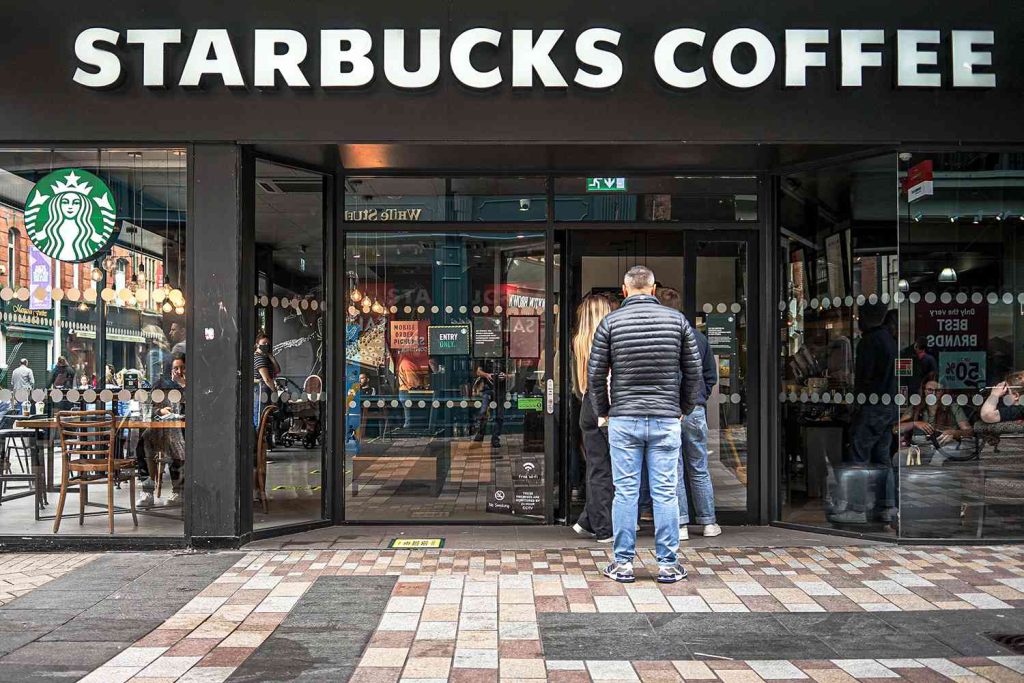New Starbucks Rule in New Jersey: No More Free Rides
Starbucks, long known as a popular hangout for people of all ages, is making some significant changes to its policies. Over the years, Starbucks became a go-to spot not only for coffee but also for a place to relax, work, or simply spend time without the need to make a purchase. However, that’s about to change as the company tightens its rules.
The Shift in Starbucks Policy
Starbucks gained a reputation for its welcoming environment, offering free Wi-Fi and comfortable seating without requiring customers to make a purchase. This “Open Door” policy made it a hub for students, remote workers, and even casual visitors looking for a clean restroom or a quiet place to sit.
Now, the company is reversing this approach. Going forward, customers will need to make a purchase if they want to use Starbucks’ facilities or spend time in its stores. This shift comes as Starbucks aims to address several challenges, including loitering and maintaining a cleaner, more enjoyable environment for paying customers.
Why the Policy Change?
Starbucks’ decision to update its policy stems from concerns about loitering and the behavior of some non-paying visitors. Over time, the “Open Door” policy led to challenges, including overcrowding, messes left behind by non-customers, and even safety issues.
The company has stated that the new rules are designed to ensure that Starbucks locations remain welcoming and safe for everyone. In addition to requiring purchases, the updated policy will include guidelines addressing behavior, explicitly prohibiting violence, harassment, and other disruptive actions.
Starbucks’ management hopes these changes will strike a balance between maintaining an inclusive environment and protecting the interests of paying customers and employees.
Reactions from the Public
The new rules have sparked mixed reactions. On one hand, some people understand the company’s decision and see it as a necessary step to maintain order and cleanliness in its stores.
One customer remarked, “I think it’s fair. If you’re going to use their space and facilities, it’s only reasonable to buy something. They’re running a business, after all.”
On the other hand, critics argue that the move undermines the sense of community Starbucks once fostered. Many people valued the ability to use Starbucks as a space to study, work, or meet friends without feeling pressured to spend money.
“I used to go there to work on my laptop because it was a welcoming space,” said a local college student. “Now, I’ll have to find somewhere else to go.”
Broader Implications
The updated policy reflects a broader trend in the retail and hospitality industries. Businesses are increasingly reevaluating how they manage their spaces to ensure they are used responsibly and profitably.
Starbucks is not alone in implementing stricter policies. Many cafes, restaurants, and public spaces have faced similar challenges, particularly in urban areas where space is at a premium. These establishments must balance offering a welcoming environment with managing costs and ensuring the comfort of paying customers.
What to Expect Moving Forward
Starbucks customers in New Jersey—and potentially nationwide—should prepare for a different experience when visiting their local store. Here’s what the new rules mean:
- Purchase Requirement: Visitors must make a purchase to stay in the store, use seating areas, or access restrooms.
- Behavioral Guidelines: The policy explicitly prohibits violence, harassment, and other disruptive behaviors.
- Cleaner Spaces: With fewer non-paying visitors, stores are expected to be cleaner and less crowded, creating a better experience for customers.
Starbucks is likely to monitor the impact of these changes and adjust its approach as needed. While some may view the policy shift as a loss of the brand’s original ethos, others see it as a practical move to ensure the sustainability of its operations.
A Look Back at the “Open Door” Era
Starbucks’ “Open Door” policy wasn’t without its challenges. In 2018, the company announced that its stores would be open to everyone, even those who didn’t make a purchase. This decision came in response to an incident in Philadelphia where two Black men were arrested for sitting in a Starbucks without ordering anything.
At the time, Starbucks emphasized inclusivity and launched training programs for its employees to address racial bias. The policy was widely praised as a step toward creating a welcoming environment for all. However, it also led to unintended consequences, including an increase in loitering and other issues that strained store resources.
Striking a Balance
The new policy represents Starbucks’ attempt to find a middle ground between inclusivity and practicality. While the “Open Door” policy was rooted in good intentions, it ultimately created challenges that the company could no longer ignore.
By requiring purchases and implementing behavioral guidelines, Starbucks aims to create a space that is both welcoming and manageable. For loyal customers, the changes may enhance their experience by ensuring cleaner, less crowded stores. For others, it may mean finding alternative spaces to work or relax.
Final Thoughts
Starbucks’ decision to implement stricter rules marks a significant shift for the brand. While it may disappoint some customers, the move underscores the challenges businesses face in maintaining inclusive yet sustainable operations.
As the policy takes effect in New Jersey and potentially expands to other locations, the impact on customers and the brand’s reputation will become clearer. For now, Starbucks is focused on creating a balanced environment that supports its employees and paying customers while addressing longstanding issues of loitering and disruptive behavior.
Whether this new approach will strike the right balance remains to be seen, but it’s clear that Starbucks is committed to evolving with the times.
Disclaimer – Our editorial team has thoroughly fact-checked this article to ensure its accuracy and eliminate any potential misinformation. We are dedicated to upholding the highest standards of integrity in our content.





More Stories
New Rules at Starbucks: How They’re Changing the Coffee Shop Experience
New Rules at Starbucks: How They’re Changing the Coffee Shop Experience
New Rules at Starbucks: How They’re Changing the Coffee Shop Experience